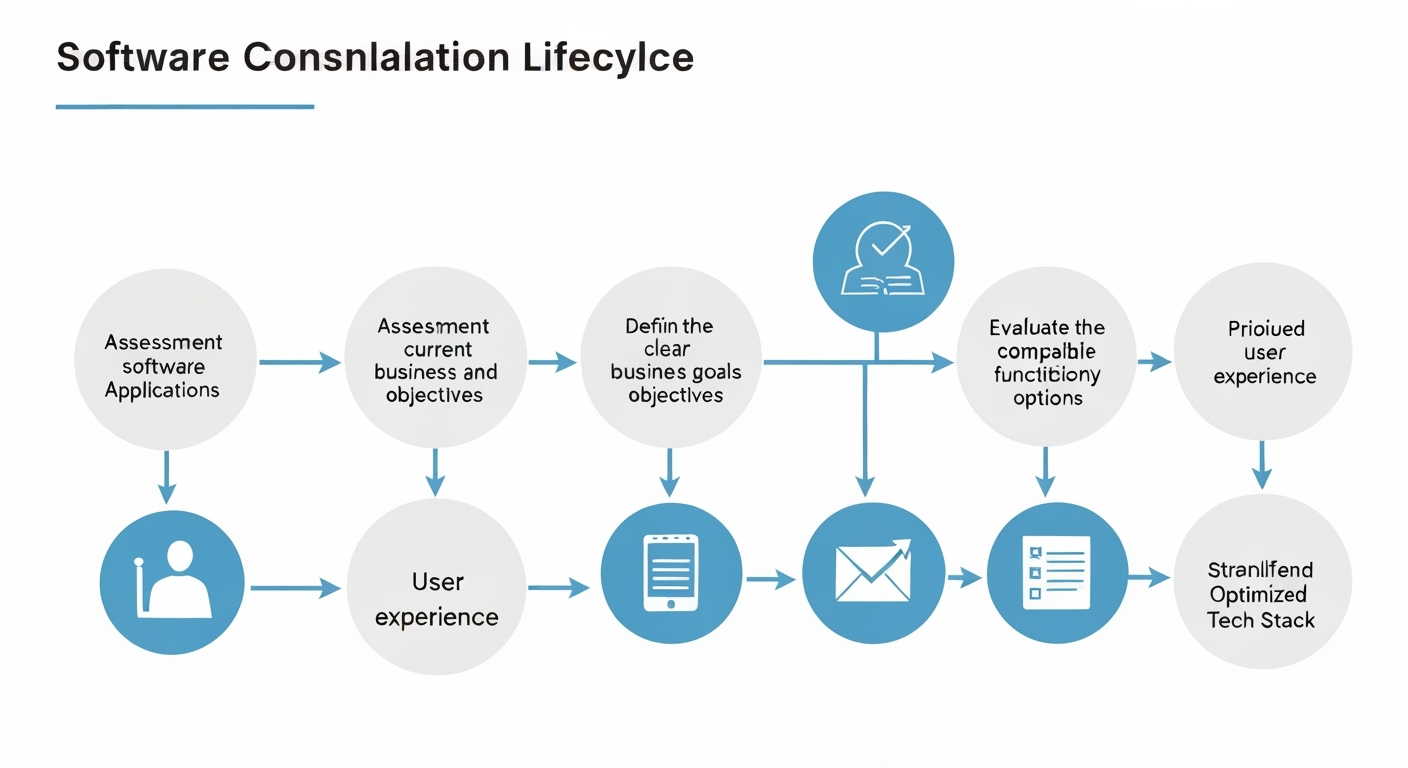
In today’s rapidly evolving tech landscape, many businesses find themselves juggling a multitude of software applications. While each tool may serve a specific purpose, the cumulative effect can be a sprawling, inefficient, and costly “tech stack.” Is it time to consolidate?
This post explores the benefits of software consolidation, the challenges involved, and how to strategically streamline your tech stack for enhanced productivity and cost savings.
The Problem with Software Sprawl
Software sprawl refers to the uncontrolled proliferation of software applications within an organization. This can lead to:
- Increased Costs: Multiple subscriptions, licensing fees, and maintenance expenses can quickly add up.
- Reduced Productivity: Employees waste time switching between applications, leading to decreased efficiency.
- Integration Challenges: Disparate systems often lack seamless integration, hindering data flow and collaboration.
- Security Risks: A larger attack surface increases the potential for vulnerabilities and security breaches.
- Management Overhead: IT departments struggle to manage, update, and secure a diverse range of applications.
The Benefits of Software Consolidation
Consolidating your software stack can yield significant advantages, including:
- Cost Savings: Reducing the number of applications can lead to substantial savings on licensing, maintenance, and support costs.
- Improved Productivity: Streamlined workflows and reduced application switching can boost employee productivity.
- Enhanced Integration: Consolidating to a smaller number of integrated platforms improves data flow and collaboration.
- Strengthened Security: A smaller, more manageable attack surface reduces security risks and simplifies security management.
- Simplified Management: IT departments can focus their resources on a smaller number of critical applications, improving efficiency and reducing overhead.
How to Strategically Consolidate Your Software
Consolidating your software stack requires a careful and strategic approach:
Assess Your Current Software Landscape: Conduct a thorough audit of all the software applications used within your organization. Identify redundancies, overlaps, and underutilized tools.
Define Your Business Needs: Clearly define your business requirements and priorities. Determine which applications are essential for meeting those needs.
Evaluate Integration Capabilities: Choose platforms that offer seamless integration with your existing systems and workflows. Consider APIs, connectors, and other integration options.
Prioritize User Experience: Select applications that are user-friendly and intuitive to minimize the learning curve and maximize adoption rates.
Consider Cloud-Based Solutions: Cloud-based platforms offer scalability, flexibility, and cost-effectiveness, making them an attractive option for consolidation.
Develop a Phased Approach: Implement the consolidation process in phases to minimize disruption and ensure a smooth transition.
Provide Training and Support: Offer comprehensive training and support to employees to help them adapt to the new software environment.

Key Considerations for Choosing Replacement Software
- Scalability: Can the software grow with your business?
- Security: Does it have robust security features and compliance certifications?
- Support: Is there reliable customer support and documentation?
- Total Cost of Ownership (TCO): Consider all costs, including licensing, implementation, training, and maintenance.
- User Reviews and Ratings: Research what other users are saying about the software.
The Future of Software Management
The trend toward software consolidation is likely to continue as businesses seek to optimize their IT infrastructure, reduce costs, and improve efficiency. AI-powered platforms that can automate software management tasks and provide real-time insights will play an increasingly important role in the future.
Conclusion
Software consolidation is a strategic imperative for businesses seeking to streamline their operations, reduce costs, and improve productivity. By carefully assessing their needs, evaluating their options, and implementing a phased approach, organizations can successfully consolidate their software stack and unlock significant benefits.